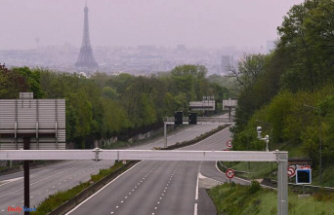There are a large number of gas station operators throughout Germany, none of which have a dominant position. However, an analysis at district and city level gives a completely different picture. According to the German Economic Institute, there are oligopolies in more than half of all regions.
In large parts of Germany, a few companies have a dominant position in the petrol station market. An analysis of market data by the German Economic Institute (IW) shows that in more than half of the cities and districts, a few petrol station operators have an oligopoly. In 229 of the 400 urban and district-free cities, either three operators have at least 50 percent of the market or five companies have two-thirds of the market. This corresponds to the threshold values for a market-dominant position from the law against restraints of competition.
The Bundeskartellamt had recently determined that competition among gas stations throughout the country is definitely working. Although the net fuel prices - i.e. minus taxes - have risen noticeably, this is due to the difference between the price of crude oil and the higher selling price of the refineries, while the petrol stations as a whole only pass on the price impulses of their suppliers. However, the Cartel Office also found that this does not apply across the country. The price adjustment as a result of the energy tax cut on June 1st was carried out at different speeds depending on the region. Among other reasons, this could be due to "different competitive conditions".
According to the analysis by IW economists Jan Büchel and Christian Rusche, these differences in competition are significant. Measured by the number of local gas stations, the three largest providers in the Minden-Lübbecke district in North Rhine-Westphalia have a market share of just 27 percent. In Trier in Rhineland-Palatinate near the Luxembourg border, on the other hand, the three largest companies share 89 percent of the petrol station market among themselves, with five companies accounting for 100 percent. The districts and cities with petrol station oligopolies are distributed across all federal states. There are focal points with a high market concentration in Saarland and Rhineland-Palatinate, as well as in southern North Rhine-Westphalia, in western Hesse, in eastern Lower Saxony and in northern and eastern Bavaria.
The threshold values of the competition law are not exceeded throughout Germany. The three largest gas station operators only have a market share of around 35 percent, the five largest around 47 percent. According to the IW economists, however, these nationwide values are not decisive. Because for a person in Kiel, a petrol station in Freiburg is not an alternative to petrol stations in Kiel and therefore not in one and the same geographic market. In their analysis, they use the number of gas stations as a measure of market share. Evaluations based on sales or quantities sold can come to different results, since the gas stations of large companies are often larger and generate more sales than smaller independent gas stations.
The analysis cannot answer the question to what extent the gas station operators actually exploit their regional market power. There can be a number of other reasons for the price differences, such as regionally different costs for logistics and, above all, the proximity to neighboring countries such as Luxembourg and Poland, where petrol is sometimes significantly cheaper or at least was up to the tank discount. In addition to higher prices, a lack of competition could also lead to other negative consequences, write the IW experts. This includes, for example, shorter opening times.
The authors point out that with the establishment of the market transparency office for fuels at the Federal Cartel Office, which also provided the data for the analysis, a measure has already been taken that strengthens competition even among a few suppliers. The transparency office collects the prices of all gas stations nationwide in real time and makes them available to the providers of tank apps, for example. This makes possible price differences between gas stations more visible and even a small number of free gas stations can put the major providers under competitive pressure.












